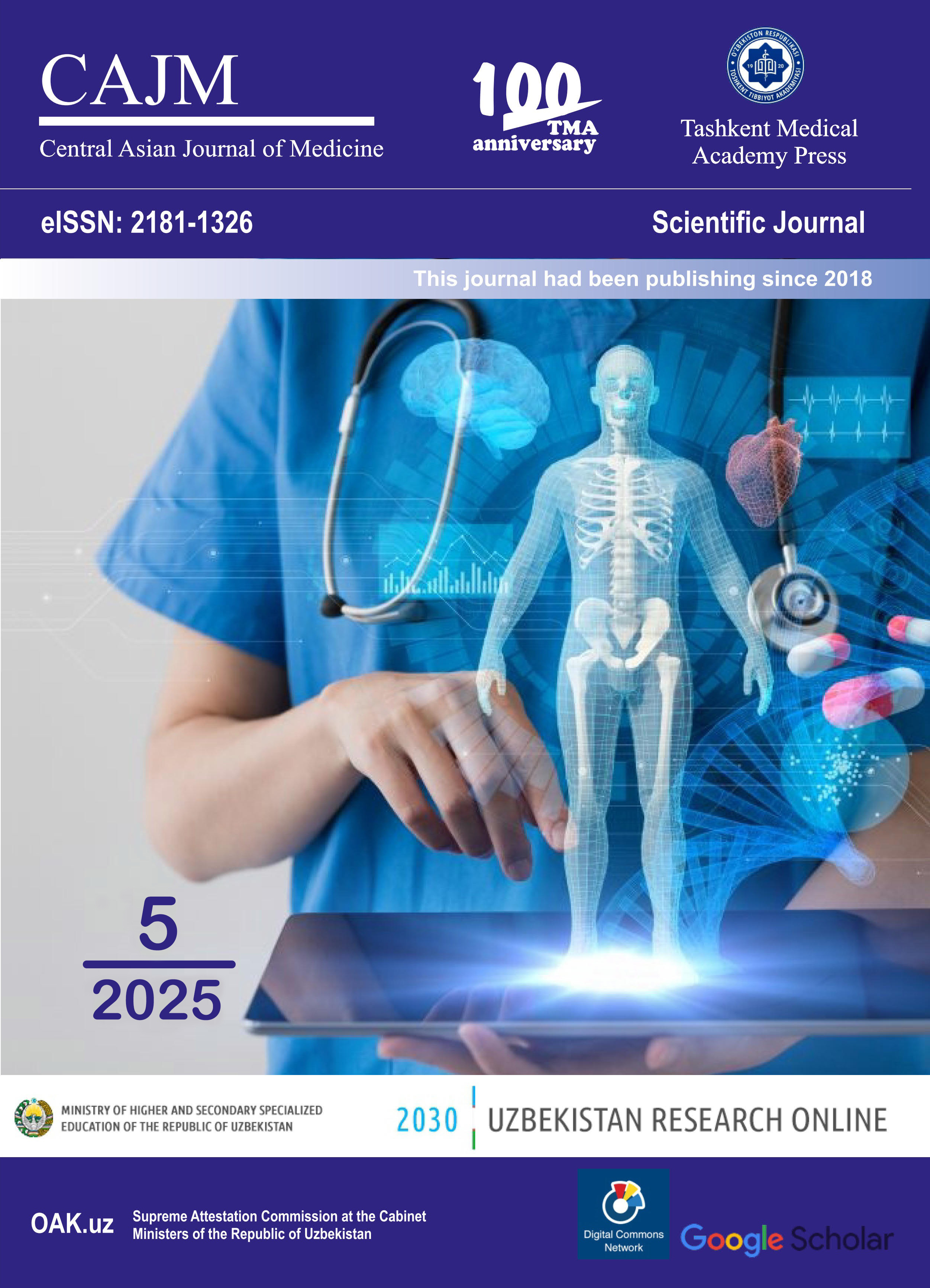ATRIAL FIBRILLATION AS A PROGNOSTIC FACTOR AFTER BALLOON MITRAL VALVULOPLASTY USING THE INOUE TECHNIQUE: A RETROSPECTIVE ANALYSIS OF LONG-TERM OUTCOMES
Keywords:
mitral stenosis, balloon mitral valvuloplasty, atrial fibrillation, sinus rhythm, survival, hemodynamics.Abstract
This study presents a comparative analysis of long-term hemodynamic outcomes and survival rates in patients with rheumatic mitral stenosis (MS) who underwent balloon mitral valvuloplasty (BMV) using the Inoue technique, considering the presence of atrial fibrillation (AF) and sinus rhythm (SR). A total of 358 patients were included and divided into AF (n=115) and SR (n=243) groups. Comprehensive assessments of clinical characteristics, echocardiographic parameters, and the incidence of adverse cardiovascular events as well as survival using the Kaplan–Meier method were performed. The results demonstrated that BMV effectively improved hemodynamic parameters in both groups, significantly increasing mitral valve area and reducing the transmitral gradient. However, patients with AF were older, exhibited more pronounced left atrial dilation, and had reduced left ventricular systolic function. Clinical outcomes in this group were less favorable, with higher mortality rates (19.1% vs. 0% in the SR group), increased hospitalizations, and complications. Event-free survival remained stable in the SR group throughout the follow-up period, whereas a significant decline was observed in the AF group. These findings emphasize the importance of early BMV intervention in patients with sinus rhythm to prevent the development of atrial fibrillation and improve prognosis. Patients with AF require prolonged follow-up and a comprehensive therapeutic approach to reduce the risk of adverse outcomes. The results are critical for optimizing the management strategy of rheumatic mitral stenosis, taking into account the arrhythmic status of the patient.
References
Iung B, Leenhardt A, Extramiana F. Management of atrial fibrillation in patients with rheumatic mitral stenosis. Heart. 2018 Jul;104(13):1062-8. doi: 10.1136/heartjnl-2017-311425.
Kapoor A, Kumar S, Singh RK, et al. Management of persistent atrial fibrillation following balloon mitral valvotomy: safety and efficacy of low-dose amiodarone. J Heart Valve Dis. 2002; 11:802-9.
Karthikeyan G, Ananthakrishnan R, Devasenapathy N, et al. Transient, subclinical atrial fibrillation and risk of systemic embolism in patients with rheumatic mitral stenosis in sinus rhythm. Am J Cardiol. 2014; 114:869-74.
Kavthale SS, Fulwani MC, Vajifdar BU, et al. Atrial fibrillation: how effectively can sinus rhythm be restored and maintained after balloon mitral valvotomy? Indian Heart J. 2000; 52:568-73.
Langerveld J, van Hemel NM, Kelder JC, et al. Long-term follow-up of cardiac rhythm after percutaneous mitral balloon valvotomy. Does atrial fibrillation persist? Europace. 2003; 5:47-53.
Miura S, Arita T, Domei T, Yamaji K, Soga Y, Hyodo M, Shirai S, Ando K. Impact of preprocedural atrial fibrillation on immediate and long-term outcomes after successful percutaneous mitral valvuloplasty of significant mitral stenosis. Cardiovasc Interv Ther. 2018 Jan;33(1):46-54. doi: 10.1007/s12928-016-0434-9.
Vilvanathan VK, Srinivas Prabhavathi Bhat BC, Nanjappa MC, et al. A randomized placebo-controlled trial with amiodarone for persistent atrial fibrillation in rheumatic mitral stenosis after successful balloon mitral valvuloplasty. Indian Heart J. 2016;68(5):671-7.

